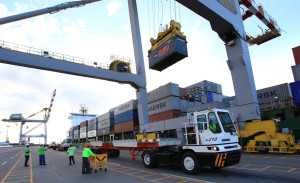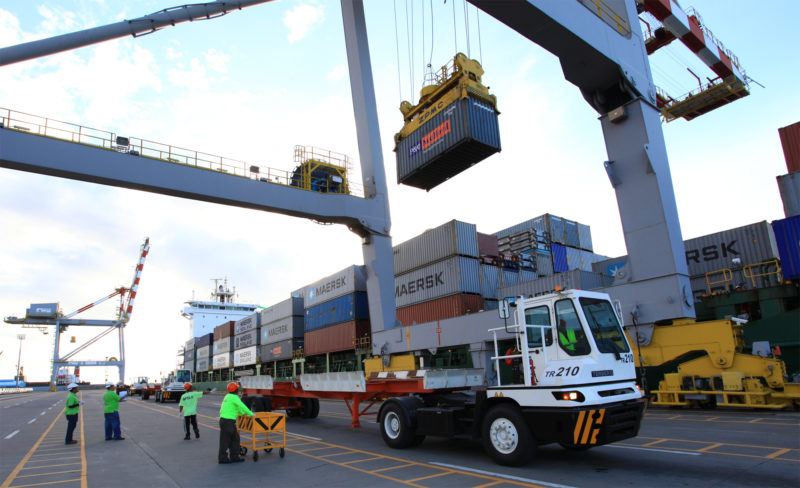 Philippine-listed company Asian Terminals Inc. (ATI) said there has been an increase in containerized cargo operations in Batangas port, two hours south of the Philippine capital Manila, yet it would take some time before it attains a high utilization rate.
Philippine-listed company Asian Terminals Inc. (ATI) said there has been an increase in containerized cargo operations in Batangas port, two hours south of the Philippine capital Manila, yet it would take some time before it attains a high utilization rate.
Batangas port’s container volume reached 137,109 twenty equivalent units in 2012.
ATI executive vice president Andrew Hoad said the traffic of completely built-up units of cars handled by Batangas port grew 54%. At 65,867 units, this comprised nearly half of the total CBUs sold nationwide by the Philippine car industry in 2012.
“Relatively, we have an underutilized container port that’s why we’re putting extensive efforts for marketing and there has been a good response. We are meeting freight forwarders, shipping lines, and locators in the Calabarzon (Cavite, Laguna, Batangas, Rizal and Quezon),” Hoad said, adding that ATI is getting good response.
ATI has a good chance of gaining new shipping lines as port users in two to three months’ time, Hoad noted but refused to give further details.
“It takes time in order for the locators, the freight forwarders, shippers to migrate. What we do is we promote the port well. We have a good product, but the steady growth and good growth will come when the network expands,” he explained.
Stakeholders are satisfied with the quality of product ATI offers at Batangas port, he said, but they want more volume growth.
Business locators in Calabarzon get significant discounts on port dues from the Philippine Ports Authority (PPA) and incentives from the Philippine Economic Zone Authority (PEZA).
Based on the report presented at the National Competitiveness Council’s stakeholders’ consultative meeting with the Japan International Cooperation Agency study team on “Decongesting Manila ports and diverting container traffic to Batangas and Subic,” Subic and Batangas ports offer lower cargo-related costs compared to Manila ports.
“If you have a ship going to Batangas port, it will cost 20-25% less than a ship going to Manila,” Hoad said, noting that Batangas port primarily serves new industry and businesses south of Metro Manila and in Calabarzon.
The stevedoring charge for a 20-foot container is P3,564 in Batangas, lower than Manila’s P3,991.58 fee, while that for a laden 40-foot container is P4,985, cheaper than Manila’s P5,583.58.
For arrastre, Batangas charges P3,078.95 for a 20-footer and P7,064.20 for a 40-footer import containers, respectively, compared with Manila’s P3,241 for a 20-footer and P7,436 for a 40-footer.
For export containers, Batangas charges P2,513.70 (20- footer) and P5,773.45 (40 -footer), lower than Manila’s P2,646 and P6,077 for 20- foot and 40-foot containers, respectively.
“We give competitive service at a reasonable cost. Batangas is a complementary port to Manila and not a substitute,” Hoad said.
Photo from Asian Terminals, Inc





